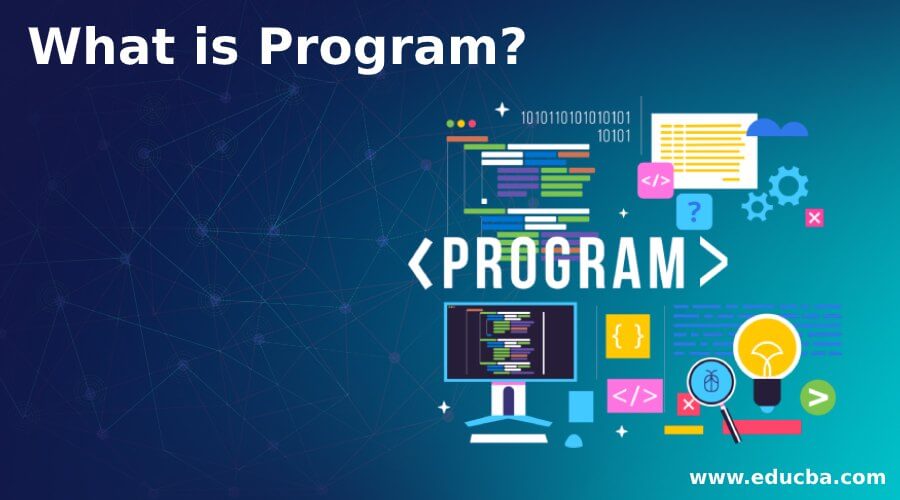Updated May 23, 2023

What is a Program?
As a verb, “Desktop program” describes the process of constructing a software program using a programming language. As a noun, it refers to a specific task performed on a computer using an application, program, or application software. Similarly, “computer program” serves as a noun and substantive phrase, referring to a series of commands. As a verb, it describes the act of constructing a software program using a programming language.
What is the Purpose of a Program?
The software does a particular activity on the computer. Although a machine can operate with the operating system without application software (programming), it can not perform a specific function. You have to install Microsoft Word on your machine if, for example, you want to create a Word document. It is a program or software to help you create, edit, and save a document or a file on your computer.
Difference between Applications and Programs
Each device can be referred to as a program, but it cannot function as a program itself. A request is a series of services that help end-users accomplish a goal. Such programs communicate to perform tasks or events. It can only be possible to execute end-user commands with software and functions. In comparison, a program is a set of instructions that define the computer’s mission.
Essential Functions of a Program
The program’s purpose depends on the software type. An internet browser’s role is to find information on and show the world wide web on the computer, edit and view the materials related to measurement, analytics, etc. Programmers generally develop a program to perform a specific function or task. Excel programs can, for example, generate text, but they cannot locate information like a browser on the World Wide Web.
Examples of Program
Today, different cell phones, computers, and other equipment devices are available. The table below contains some examples and a brief overview of programs in their group.
- Google Chrome: Google launched it on 11 December 2008. This is an internet browser. It collects and views information on the World Wide Web on a computer screen. This provides various features to support users, including tab surfing, Google Services and Accounts synchronization, web-based spell check, and automatic translation. Furthermore, an Omnibox search bar allows users to scan for any query.
- C Programming Language: A general programming language used for software development. Following Dennis Ritchie’s production at Bell Labs, this (referring to a specific programming language) was published in 1972. It is widely used for writing complex programs such as Python, Git, Oracle, etc. It also includes features that are easy and secure, portable, rich library, expandable, high speed, and more.
- Adobe Photoshop: It supports all file formats and even JPG, Targa, GIF, BMP, HEIF, etc. It allows users to make, edit, change, and perform, including live imagery, and create an animated GIF from an image or short video files. It also offers image editing applications that function in macOS or Windows.
- Microsoft Word: It’s a template for word processors. Microsoft developed and published it, which was created by Charles Simonyi and Richard Brodie. The Word software is available on Windows, Android, Apple iOS, and Apple macOS and the Linux OS with WINE.
- Mozilla Thunderbird: The open-source email client offers the ability on MS Windows, Linux, macOS, and other support systems to send, receive, and handle their emails. IMAP or POP3 provides the email, and users can send it using the Simple Mail Transfer Protocol (SMTP). It provides an alternative for receiving mail from their email provider.
- Adobe Dreamweaver is a software program that Macromedia released in 1997 to construct web pages. It is a complete HTML and Program Editor which allows WYSIWYG users to build and edit web pages (what you see is what you get). It supports HTML, CSS, JavaScript, XML, and languages such as Chinese, Japanese, Russian, Spanish, English, French, etc.
- Audacity: It’s an open-source program that allows users to capture and edit sound recordings. It will operate on operating systems like macOS, Linux, and Windows. The GPL (General Public License) is available free of charge.
- FileZilla: FileZilla is an open-source program allowing users to pass data to a remote computer from a local computer. It includes additional features such as Move Fast, File & Folder View, Directory Comparison, Site Manager, and other major features.
Recommended Articles
We hope that this EDUCBA information on “What is Program?” was beneficial to you. You can view EDUCBA’s recommended articles for more information.
